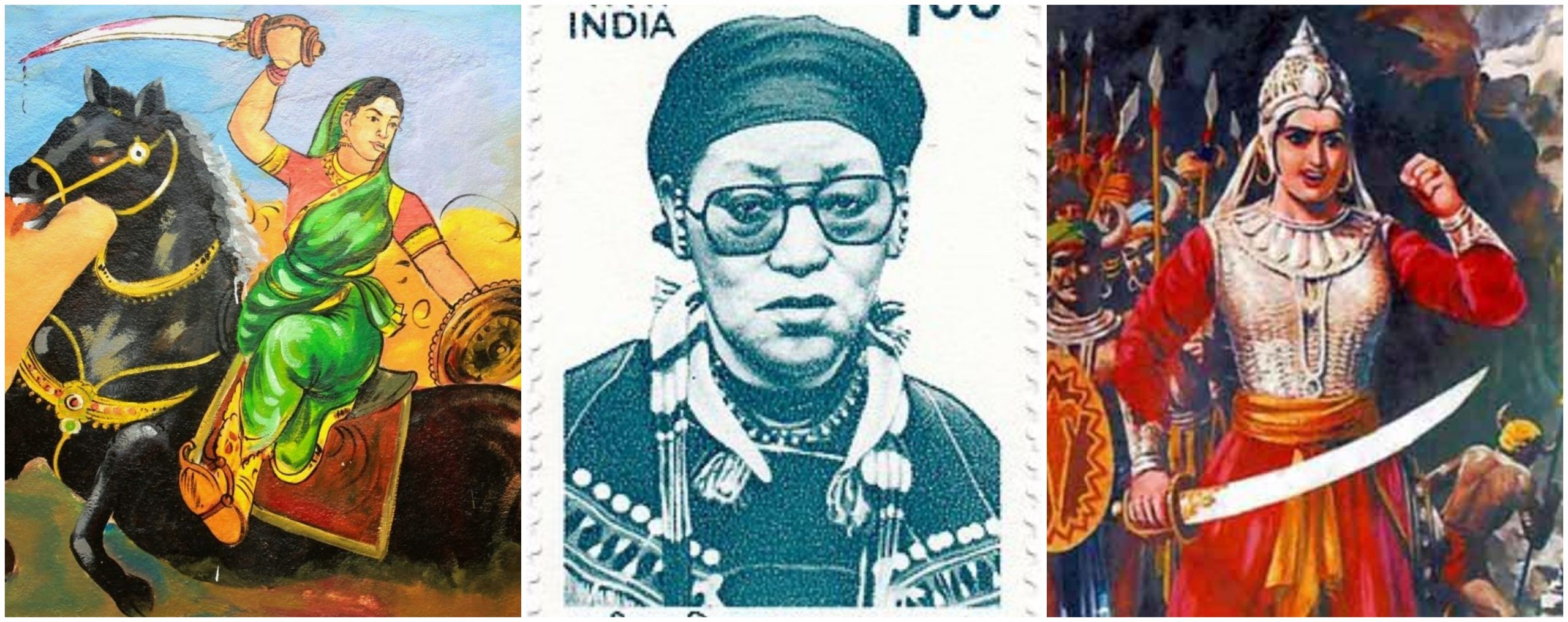The journey to the formation of the republic of India was a long, exasperating one. Right from the reign of Mughals to the colonisation by the British, India has seen revolutionaries who helped India reach where it is today. However, there are some leaders whose contribution to the country is rarely spoken about. Here are 3 tribal women who helped form the Indian republic as it is today.
1. Rani Durgavati
Rani Durgavati was the Queen of the Gonds from 1550 until 1564 and is an icon in warfare due to her successes in defending her kingdom against the Mughal army. Growing up, Rani Durgavati was well versed in sword fighting, horse riding and archery. Shortly after her marriage to Dalpat Shah, the eldest son of the King of the Gond dynasty, he passed away and she was named a Regent and the ruler of the kingdom of Gondwana.

Her prosperous kingdom faced the wrath of multiple attacks by Mughals, first by Baz Bahadur, the Sultan of Malwa and then by Asaf Khan, a Mughal general. Not only did she repulse the first attack, but she also inflicted heavy losses on Bahadur’s army. During the second battle, the Rani herself led the troops and drove the Mughals out of her kingdom and emerged victorious. After 3 successful attempts of forcing the Mughals to recede, the Rani was shot by 2 arrows, and instead of being captured by the enemy, she decided to take her own life. Her kingdom of Garha-Mandla was eventually incorporated into the Mughal dominion, but the Rani’s bravery and sacrifice is remembered by the locals even today and the day of her martyrdom (24 June 1564) is even today commemorated as “Balidan Diwas”.
2. Rani Gaidinliu
“We are free people — the white man should not rule over us,” exclaimed Rani Gaidinliu as she led a movement to drive out the colonial rulers from Manipur and Nagaland. Called as the “Rani of the Nagas” by Pandit Jawaharlal Nehru, Rani Gaidinliu joined the freedom struggle in present-day Northeast India at the young age of 13. Gaidinliu belonged to the Rongmei clan of the Zeliangrong tribe in the Tamenglong district of western Manipur. At the age of 10, she came under the influence of her cousin, Haipou Jadonang, who was then leading a socio-political movement called Heraka (meaning ‘pure’), which was inspired by ancestral Naga practices and which aimed to drive the British out from the region.
After the death of Jadonang, Gaidinliu began to rebel against British rule and asked her Zeliangrong tribesmen to refuse to pay taxes and called out for freedom. The majority of people were on her side and this made her a huge threat to the colonial rule. This led to the British launching a manhunt to capture Gaidinliu. After evading arrest for a while, she was arrested and tried and sentenced to life imprisonment at the age of 16.

She was released in 1947 after India became independent, and continued to work for the upliftment of her people and advocate ancestral Naga religious practices, resisting the conversion of Nagas to Christianity. She was awarded the Tamrapatra Freedom Fighter Award in 1972, the Padma Bhushan in 1982 and the Vivekananda Seva Award in 1983. She was also awarded the Birsa Munda award posthumously.
Also read: The Faces Of India’s Adivasi And Tribal Activism You Should Know
3. Rani Chennamma
Kittur Chennamma, also known as Rani Chennamma, was the Queen of Kittur, was one of the first female rulers to rebel against British rule and has become a folk hero in Karnataka, as well as a symbol of the independence movement. She is known for leading an armed force against the British East India Company in 1824, in defiance of the doctrine of lapse, which was based on the idea that in case the ruler of an independent state died childless, the right of ruling the State reverted or ‘lapsed’ to the sovereign.

Rani Chennamma was married to Mallasarja Desai, the king of Kittur, with whom she had a son. After the death of her husband in 1816, her son also died in 1824. With no heir to the throne, Kittur Chennamma adopted Shivalingappa, an act which irked the British and led them to exile Shivalingappa from the kingdom. Rani decided to defy the British order and would not surrender her kingdom, which led to a war breaking out.
Also read: Why Do We Need To Stop The Culture Of Tribal Tourism In India?
After an unsuccessful attempt by the British at seizing treasure and jewels from Kittur and defeating it, the British deceived Rani by promising that there would be no more war and retaliated the second time with even more forces. After 12 days of battle and yet another deception from two of her own people, Rani Chennamma was defeated and captured and imprisoned for life. Although she was defeated in battle, Rani Chennamma is a symbol of defiance against forced laws. Her first victory against the British forces is still honoured during the ‘Kittur Utsava’, held in Kittur every year. The Indian Parliament complex in New Delhi also hosts a statue of Rani Chennamma, and was unveiled by the first woman President of India, Smt. Pratibha Patil.
Originally written by Isha Chitnis for Adivasi Lives Matter.
Also published on Youth Ki Awaaz, this piece has been re-published on this website with consent.
About the author(s)
An online platform to challenge the generational neglect of indigenous peoples in India. #AdivasiLivesMatter




